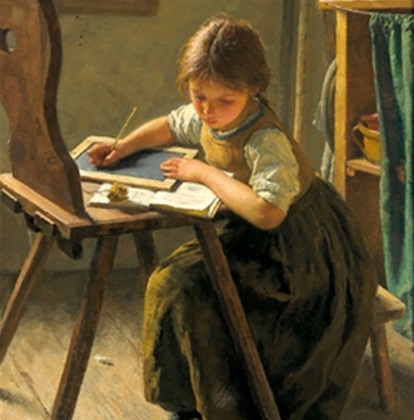
by Richard Subber | Oct 5, 2023 | Language, My poetry, Poetry, Reflections
this end, the one…
Amaze
Countless possible beginnings,
uncounted possible turns of each one,
the one end seems finally certain…
This creature on the sand,
forlorn, lifeless,
this end the one, it seems…
Still.
It will change.
Decay?
A careless word,
a haughty view,
a narrow disdain,
ignoble, incurious.
If life is the course of change
in consequence of itself,
with no limit,
then this creature,
mutely changing now,
may yet have futures…
We do no harm to give it leave to linger,
and respect its changing prospect
for moments more,
and leave it
to walk around the new curve of the dune…
Chatham, Cape Cod, MA
June 15, 2000
My poem “Amaze” was published in my sixth collection of 73 poems, Above all: Poems of dawn and more.
You can buy it on Amazon (paperback and Kindle),
or get it free in Kindle Unlimited (search for “Richard Carl Subber”).
* * * * * *
My poetry. Copyright © Richard Carl Subber 2023 All rights reserved.
Book review: Tales from Shakespeare
summaries by Charles and Mary Lamb…
–
As with another eye: Poems of exactitude with 55 free verse and haiku poems,
and the rest of my poetry books are for sale on Amazon (paperback and Kindle)
and free in Kindle Unlimited, search Amazon for “Richard Carl Subber”
Your comments are welcome—tell me what you’re thinking.
* * * * * *

by Richard Subber | Sep 7, 2023 | Joys of reading, Language, My poetry, Poetry
…let the chorus turn you…
Symphony
A new book
somehow sings a siren’s song,
a symphony of words
that make a new tune,
such delight to open any page,
and hear the mezzo’s lilt,
the soprano’s tear-stained kyrie,
and nod as the basso
closes a chapter
with words worth repeating,
and let the chorus turn you
to another page,
for more words
that suddenly are not strangers,
such old words
that make a new song.
Rumford, RI
May 30, 2023
Let yourself watch your 12-year-old granddaughter with a new book…does this poem occur to you?
* * * * * *
My poetry. Copyright © Richard Carl Subber 2023 All rights reserved.
The Scarlet Letter, victim of Hollywood
the Nathaniel Hawthorne version is best
–
As with another eye: Poems of exactitude with 55 free verse and haiku poems,
and the rest of my poetry books are for sale on Amazon (paperback and Kindle)
and free in Kindle Unlimited, search Amazon for “Richard Carl Subber”
Your comments are welcome—tell me what you’re thinking.
* * * * * *

by Richard Subber | Aug 10, 2023 | Language, My poetry, Poetry
a rose, more than a rose…
tableau en cramoisi
So ripe, these blooms!
So full, so much of rose,
a bounty of petals,
a glory of crimson,
thickets of beauty
on burdened stems.
September 25, 2019
“Red roses” wasn’t good enough to say the right words about this gift of flowers…
qu’on peut dire un peu de cramoisi aussi…
* * * * * *
My poetry. Copyright © Richard Carl Subber 2023 All rights reserved.
Book review: War and Peace, Second Epilogue
…something different: Tolstoy’s epilogue on history…
–
Seeing far: Selected poems with 47 free verse and haiku poems,
and the rest of my poetry books are for sale on Amazon (paperback and Kindle)
and free in Kindle Unlimited, search Amazon for “Richard Carl Subber”
Your comments are welcome—tell me what you’re thinking.
* * * * * *

by Richard Subber | Jul 29, 2023 | Language, My poetry, Poetry
take another look…
Show time
The final scene again:
the brash star of day
livens the broad sky,
all blaze and streak
in slow tumble of light,
and vaunting gush
and thrash of cloud…
the cascade and fleeting splash of shadows
betrays the deepening blush of night…
the star of day takes center stage
and blooms across the sky,
and now: the curtain call…
and see!
the house lights look like stars.
April 10, 2018
* * * * * *
My poetry. Copyright © Richard Carl Subber 2023 All rights reserved.
Book review: Shakespeare’s Wife
Germaine Greer went overboard a bit…
–
My first name was rain: A dreamery of poems with 53 free verse and haiku poems,
and the rest of my poetry books are for sale on Amazon (paperback and Kindle)
and free in Kindle Unlimited, search Amazon for “Richard Carl Subber”
Your comments are welcome—tell me what you’re thinking.
* * * * * *

by Richard Subber | Jul 18, 2023 | Language, My poetry, Poetry
…a reverie of imagination
456
Time becomes energy.
The clean slate waits for the first mark,
she will make that stroke
when she is ready,
she moves beyond not knowing,
as she unwinds the calculus of understanding,
and lightly trembles
with the gentle passion of curiosity.
She learns new tools
and learns that mistakes can be erased
after they have done their work.
Persistence is a new glee,
she turns the cat’s cradle of unknowns
in her reverie of imaginations,
and forgets to look up from her book,
learns to welcome the gestalt
of words on the previous page…
she coolly adds 137 and 319
in her head,
and with her chalk pencil
she writes the secret sum.
November 14, 2020
Inspired by Die Hausaufgabe (The Homework), painted in 1893 by Simon Glücklich (1863-1943)
* * * * * *
My poetry. Copyright © Richard Carl Subber 2023 All rights reserved.
“Fishering,” by Brian Doyle
…what meets the eye…
–
Above all: Poems of dawn and more with 73 free verse poems,
and the rest of my poetry books are for sale on Amazon (paperback and Kindle)
and free in Kindle Unlimited, search Amazon for “Richard Carl Subber”
Your comments are welcome—tell me what you’re thinking.
* * * * * *

by Richard Subber | Jun 27, 2023 | Book reviews, Books, Human Nature, Joys of reading, Language
…death is an anticlimax…
Book review:
Les Liaisons Dangereuses
by Pierre-Ambroise Choderlos de Laclos
Originally published 1782
Translated as Dangerous Liaisons by Ernest Dowson, New York: Doubleday, 1998
Illustrations by Sylvain Sauvage
Les Liaisons Dangereuses is not a garden of delight.
This is a book about love, but the reader will find precious little of it in these pages.
An acquaintance dismissed this voluptuous tale, thus: “All they do is talk.”
Let’s begin there. The language is rich. I daresay that Laclos turns language into an erogenous zone in Les Liaisons Dangereuses.
If you aspire to a working understanding of good and evil, you could do worse than listen to the riveting chatter of the leading personae, who choose each word with careful, deliciously ribald, austerely cruel, and domineering intent. You really don’t want to be a friend, and you most assuredly don’t want to be an enemy.
Men, en garde! The Marquise de Merteuil impulsively thinks of cojones as table ornaments.
Ladies, away! The Vicomte de Valmont is a pirate lover, he sees women as prize ships ready for boarding.
One might wish to believe that the others are innocents: Cécile Volanges, Danceny, the Présidente de Tourvel. But, hold. Each of them seeks to play the game of love, but they are hardly able to distinguish winning from losing.
Yes, this is a boundless exposé of the worst elements—of human intrigue, self indulgence, hubris, vaunting egos, and careless poaching of souls—that masquerade as amour.
Yes, in a sense, the characters are stereotypes, but each is, remarkably, ingeniously, ingenuously, a masterpiece of the type. Laclos uses every pertinent word to make them real.
Yes, Les Liaisons is an ultimately degraded experience for both the characters and readers…ultimately, the reader must condemn the Marquise and the Vicomte for so many lives destroyed…death is an anticlimax in Liaisons Dangereuses.
The Marquise and the Vicomte are burdened with a moral framework that shuns the absolute—they have unimaginably unsatisfied desires, and no intellectual elaboration of right and wrong.
Yet, a gentle reader may offer these two a bare shred of pity.
The Marquise de Merteuil and the Vicomte de Valmont swirl through their lives, casually jousting with each other as they amuse themselves in controlling the fates of other men and women, but remaining unaware that they are not in control of their own fates.
Note for bibliophiles: Whether you read this in the original French, or in the lush translation by Ernest Dowson, accept the pain of experiencing a literary style that is no longer in vogue, prepare yourself for Laclos’ fabulous late 18th century style that discards a simple declarative sentence, readily, with apparent joy, whenever a sentence heavily laden with clauses, phrases, and modifiers will do just as well, heedless of the effect on a reader, whose inclination may be to appreciate the writhing drama of this story, with somewhat fewer words.
* * * * * *
Book review. Copyright © Richard Carl Subber 2023 All rights reserved.
Book review: The Snow Goose
…sensual drama, eminently poetic…
by Paul Gallico
–
Above all: Poems of dawn and more with 73 free verse poems,
and the rest of my poetry books are for sale on Amazon (paperback and Kindle)
and free in Kindle Unlimited, search Amazon for “Richard Carl Subber”
* * * * * *





